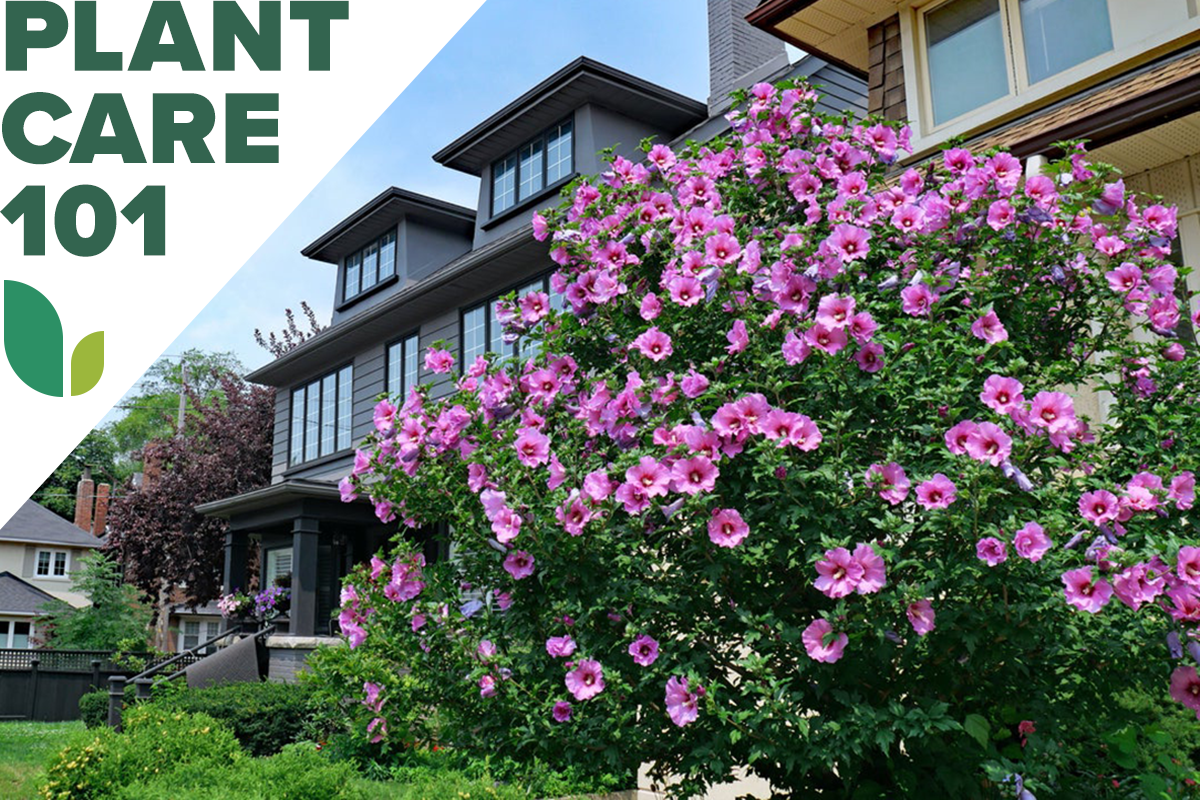

We may earn revenue from the products available on this page and participate in affiliate programs. Learn More ›
Known for big bold flowers that lend even hardy varieties a tropical look, hibiscus comes in a wide variety of species—over 200 to be exact. This article will focus on three of the most popular species: perennial hibiscus, tropical hibiscus, and the rose of Sharon.
You can use the instructions for hardy hibiscus care to grow other perennial varieties and those for tropical hibiscus to grow other tender types. Fortunately, caring for hibiscus isn’t difficult, whether you’re tending to them or developing a passion for them!
RELATED: 14 Old-Fashioned Flowers That Still Look Great in Today’s Home Gardens
Growing Hibiscus at a Glance
Common Name: Hibiscus
Scientific Name: Hibiscus spp.
Hardiness Zone: Varies according to species
Soil: Rich, moist, slightly acidic
Light: Full sun
Water: Constantly moist
Food: Balanced or hibiscus fertilizer
Propagation: Seeds, cuttings, or division
Safety: Mostly nontoxic
Hibiscus Characteristics
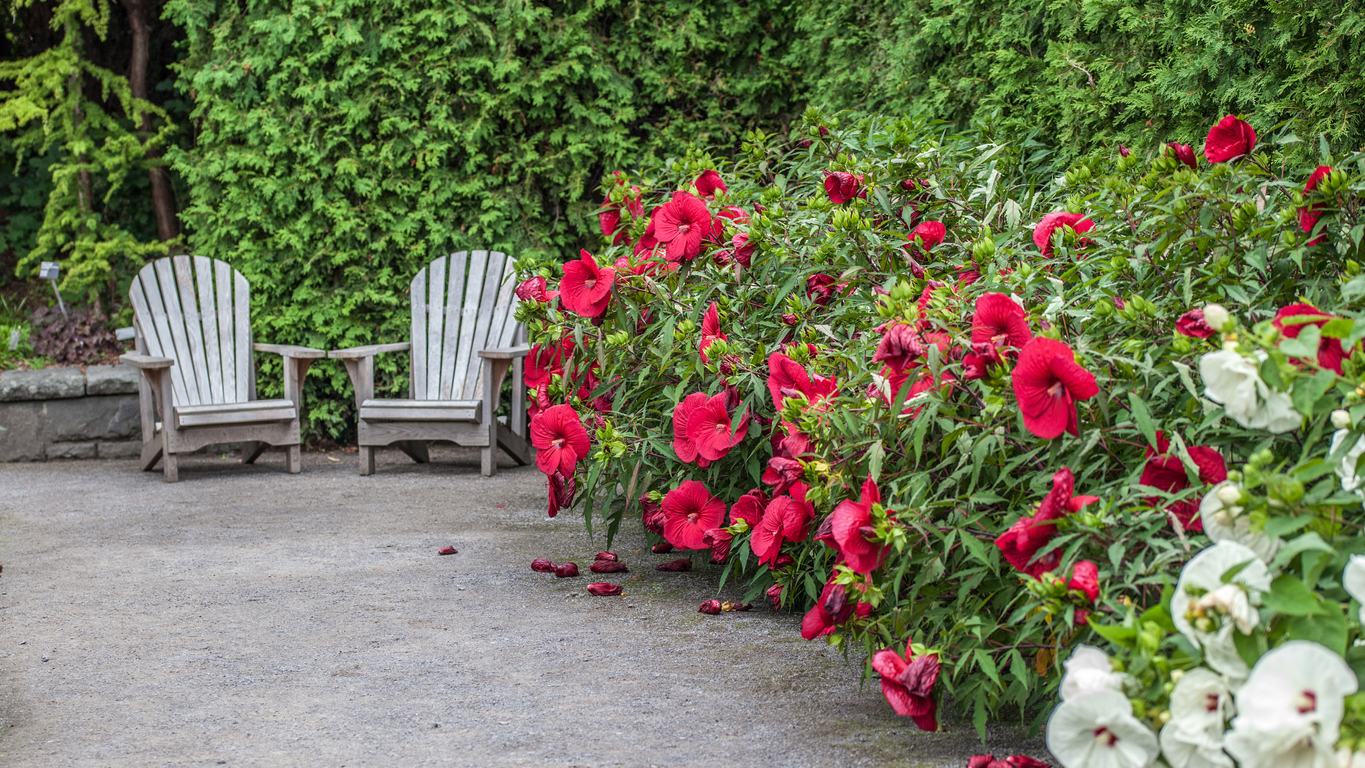
Are hibiscus perennials? It depends on the species. Blooms can range from 2 inches in diameter for the annual flower-of-an-hour (Hibiscus trionum) up to a foot across for the perennial rose mallow (Hibiscus moscheutos). Those usually feature five-petaled blooms and sometimes bicolored flowers with showy stamens.
Hibiscus plants typically grow tall. The tropical variety (Hibiscus rosa-sinensis) sometimes reaches a height of 50 feet in Hawaii, with rose of Sharon typically topping out at 12 feet and hardy hibiscus at 8 feet. Hibiscus foliage varies widely from divided, deeply lobed leaves to lightly notched ones.
When do hibiscus bloom? Rose of Sharon flowers in late summer. Hardy hibiscus starts flowering in mid-to-late summer in its northernmost zones, but it may bloom as early as late spring in southern ones. Meanwhile, tropical hibiscus can bloom off and on year-round. Keep in mind that each flower usually only lasts for a day.
Recommended Hibiscus Varieties
- Hardy Hibiscus (Hibiscus moscheutos): Hardy in USDA zones 5 through 9, this plant can grow to 8 feet tall and produce dinner-plate-size blooms up to 1 foot across, usually in shades of red, pink, or white.
- Rose of Sharon (Hibiscus syriacus): This deciduous hibiscus tree or shrub can grow to 12 feet tall with 2½- to 3-inch flowers in both single and double forms. Their colors are similar to those of the hardy hibiscus while adding in some blues and mauves as well.
- Tropical Hibiscus (Hibiscus rosa-sinensis): Hardy in USDA zones 10 through 12, this plant may thrive in frost-free areas of zone 9 as well and produces showy blooms 4 to 8 inches in diameter—sometimes double—in a wide variety of colors.
Planting Hibiscus
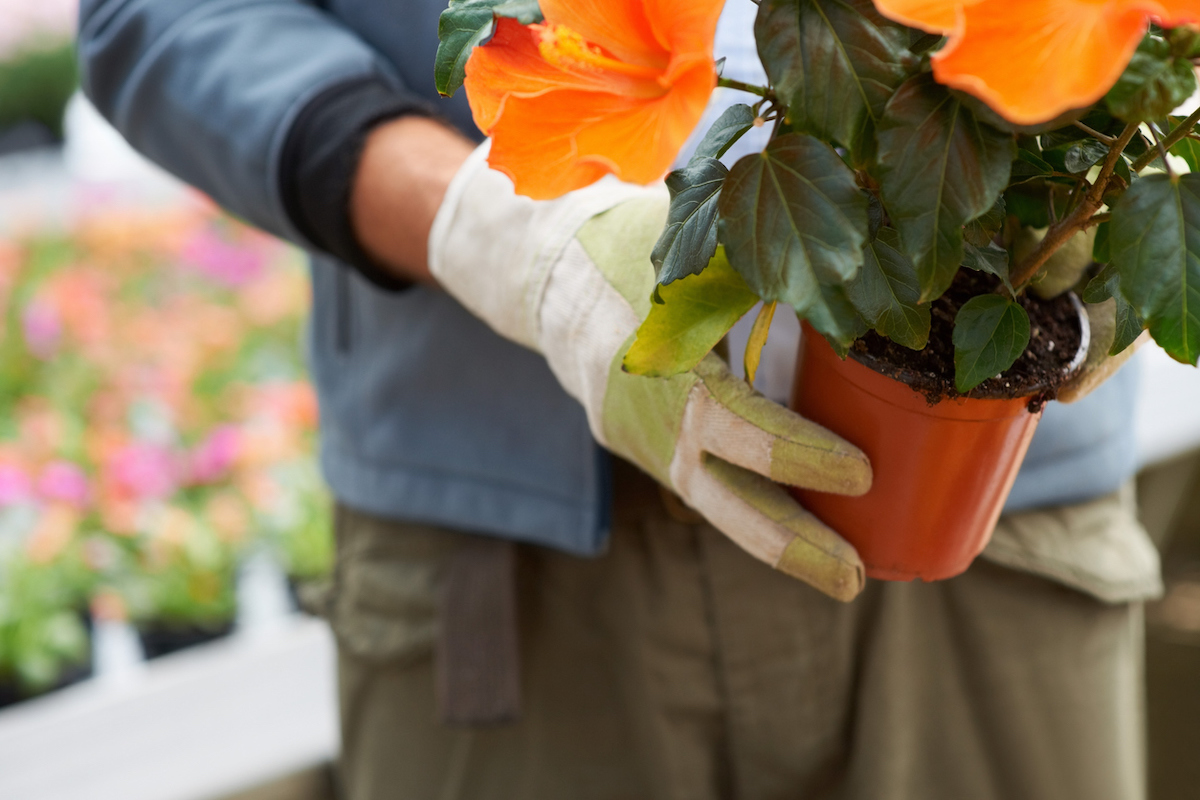
Although it is possible to grow hibiscus plants from seed, doing so means cultivars and hybrids are unlikely to “come true” (that is, they’re liable to express different traits than their parent plant). Because of this, you’ll probably want to purchase container plants instead.
RELATED: 15 Essentials for Beginner Plant Parents: What Every New Plant Owner Needs
When is the best time to plant hibiscus?
You can set out potted perennial varieties about 3 weeks before your last frost in spring, if they have been hardened by gradual exposure to outdoor conditions first. Wait until after your last frost date to move tropical hibiscus plants outdoors.
Where can hibiscus grow?
If you’re unsure if hibiscus likes sun or shade, the answer is thankfully simple: you should choose a site in full sun for the most exuberant flowering. Because hardy hibiscus originated in swamps, it will tolerate wetter ground than most perennials—as in rain or bog gardens. However, tropical hibiscus and rose of Sharon will need well-draining soil, preferably with a slightly acidic pH between 6.5 and 6.8.
How do you plant hibiscus?
- To transplant your hibiscus from a container into the ground, dig a hole that is the same depth as the plant’s root ball and twice its width.
- Water the plant. Then, remove it from its pot and coax outward any roots that may have been circling the bottom of the pot.
- Place the root ball in the center of the hole, adding soil first if necessary so that the plant’s crown is at ground level.
- Fill in the soil around the root ball, press the soil down firmly, and water the plant again.
Can you grow hibiscus in containers?
Tropical hibiscus grows well in a container and should be kept in one if you intend to bring the plant indoors over the winter in a zone where it isn’t hardy. A container also will allow you to move the plant to a sunnier or more sheltered position when necessary, while a slightly root-bound condition will encourage it to flower rather than churn out more new growth.
Good advice on how to grow a hibiscus is to use a 10-inch pot, which should be small enough for you to move easily yet large enough to accommodate a moderate-size plant. However, choose whatever container size is most appropriate for your hibiscus plant at the moment.
Watering Hibiscus
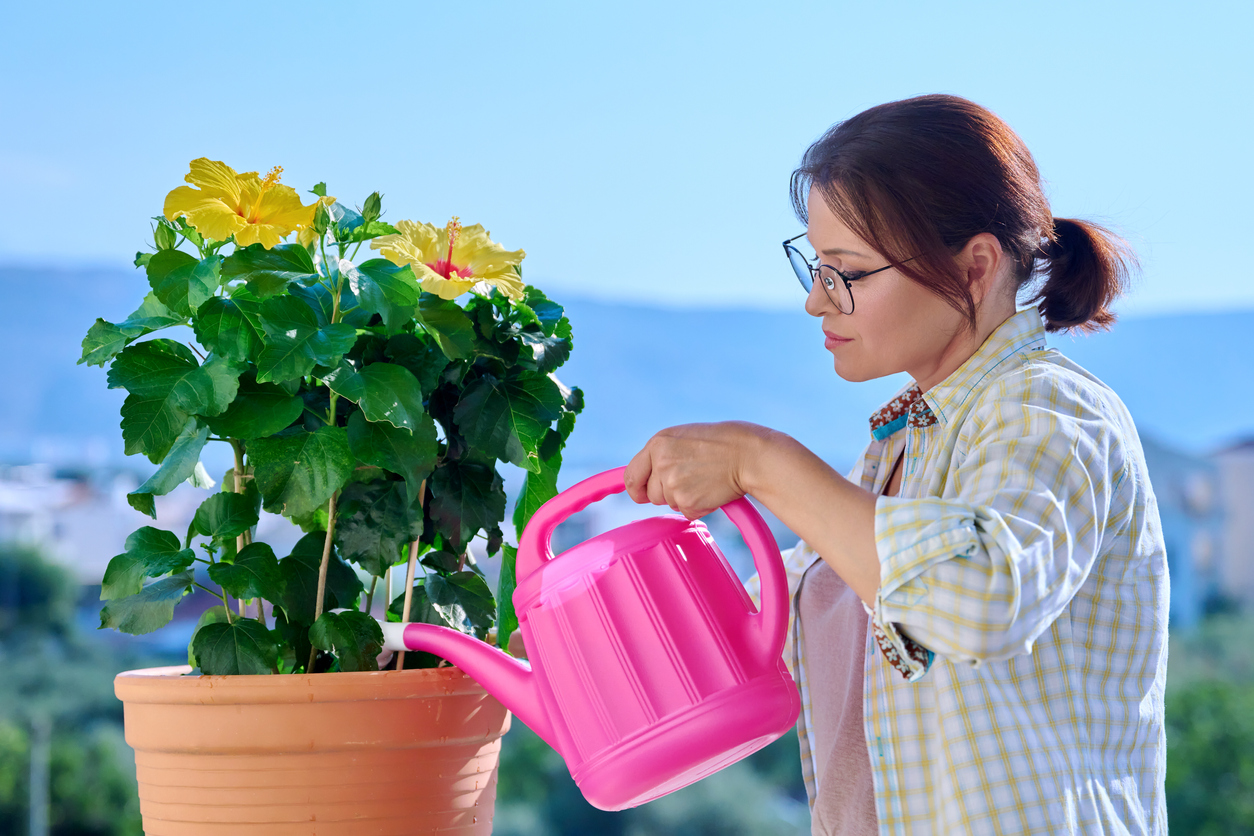
Keep an outdoor hibiscus’s soil moist at all times—lightly damp for rose of Sharon and tropical hibiscus. Hardy hibiscus shouldn’t mind a bit of sogginess, however. A hibiscus will wilt if it dries out completely, in which case you need to water it very quickly or risk losing it.
If you take your tropical type indoors for the winter, part of your hibiscus winter care should include reducing the amount of moisture you give it. Allow its soil to dry out to about an inch beneath the surface before you water it again under lower-light indoor conditions.
Fertilizing Hibiscus
Feeding is an important aspect of hibiscus plant care. Fertilize your hardy hibiscus a couple of times during the growing season; once when it sprouts and again about 6 weeks later in midsummer. Use a balanced fertilizer such as 10-10-10 or a larger amount of the organic 5-5-5. You can do the same for rose of Sharon hibiscus tree care.
Fertilize your potted tropical hibiscus with a high-potassium, water-soluble hibiscus plant food like 17-5-23, applied every 2 weeks from spring through summer. For in-ground plants, you may want to choose an organic fertilizer intended for tropical plants instead, such as 5-4-6, applied every 2 months during the growing season.
Pruning Hibiscus
How do you prune hibiscus? Luckily, hardy hibiscus prunes itself by dying back to the ground in winter. You’ll just need to remove any dead stalks after it does, leaving 3- to 4-inch stubs to mark the spot. Since these hibiscus stalks sprout late in the spring, keep track of where they are to avoid digging them up by mistake. After they pop back up, prune them back a couple of times—first when they are 8 inches tall and again when they reach 1 foot—to force them to branch out more.
If you prefer to shape your rose of Sharon as a flowering tree, remove any suckers that form to leave only a single trunk. Tropical hibiscus plants should be cut back by one-third to one-half in spring to promote bud-producing new growth. You may also want to thin out your hibiscus by removing about one-third of its oldest branches.
RELATED: 10 Sustainable Gardening Trends to Try
Propagating Hibiscus
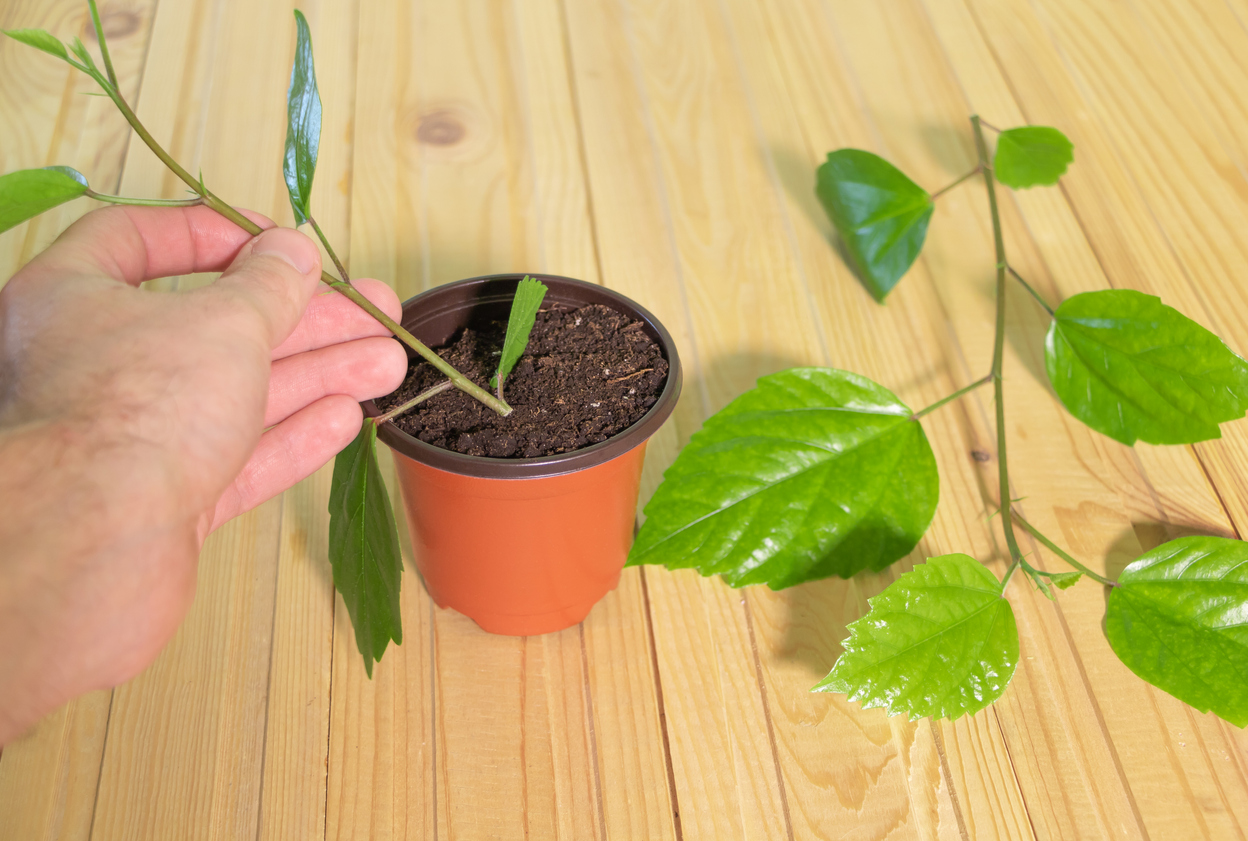
Hardy hibiscus is the type most frequently grown from seed. However, hybrids and cultivars won’t “come true,” so the seedlings may produce blooms different from those of their parent plant. Soak the spherical seeds in water for 24 hours, and then sow them about 1/16 inch deep. They often sprout within 2 to 4 days.
You also can propagate a hardy hibiscus by digging it up and dividing it in spring. If you prefer to try cuttings of any type of hibiscus, take 3- to 6-inch tip cuttings in spring. After removing the lower leaves and dipping the cuttings’ bases in rooting hormone, pot them up in a sterile soil (seed starting mix works well). Place them in a location with bright indirect light, and cover them with an inverted transparent bag. They should root in 4 or 5 weeks.
Safety Considerations
Although most types of hibiscus are nontoxic, sources disagree on rose of Sharon’s toxicity. Reports that rose of Sharon flowers and stems cause nausea and other symptoms in dogs, cats, and horses conflict with the ASPCA, which considers it nontoxic. So does the University of Arkansas, which lists it under Category 4 as “usually nontoxic to humans.” In fact, Miracle-Gro lists the rose of Sharon blooms among the edible flowers.
Take a cautious approach with all plants, and keep in mind that too much of anything can make an animal sick—especially when it’s not part of their natural diet. To be on the safe side, prevent your pets and livestock from consuming rose of Sharon flowers.
Potential Pests and Diseases
If the leaves of your tropical hibiscus yellow and fall off, they may have been exposed to colder temperatures than they prefer. Common recommendations on how to care for hibiscus generally advise that you bring a tropical variety indoors before outdoor temperatures drop below 50 degrees Fahrenheit. However, the plant also may lose much of its foliage after moving inside. That doesn’t mean it is diseased; it may just be compensating for the lower light levels indoors.
Whitefly is a common pest of hibiscus, especially giant whitefly. Remove the most infested foliage and spray the undersides of the remaining leaves with a strong stream of water. Repeat that spray at least once per week until the whiteflies are gone.
Harvesting Hibiscus
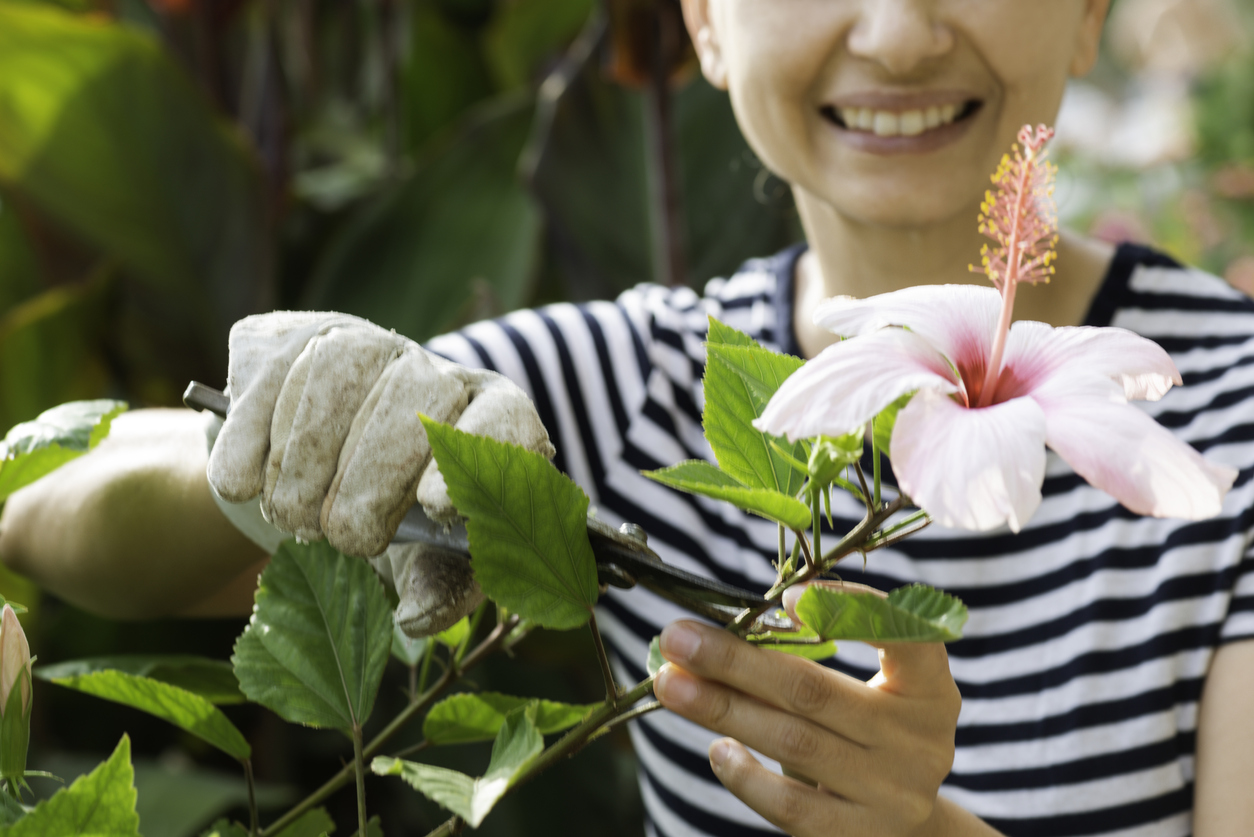
Hibiscus is closely related to edible varieties of Abelmoschus (including okra). It also has at least one plant in its own genus regularly used as a vegetable or herb: Hibiscus sabdariffa, also known as roselle, the red calyxes of which are widely harvested to make jams, jellies, teas, and more.
When is the best time to harvest hibiscus?
Harvest the reddish-green leaves of roselle while they still are young and tender a couple of months after the plants were sown. These leaves can be used as salad greens or boiled vegetables. Because the plants don’t bloom until the days grow shorter, gather the calyxes about 3 weeks after the plants begin flowering in October.
RELATED: 10 Things Every New Gardener Needs to Know
How do you harvest hibiscus?
- Find the calyxes, the red “cups” that first hold the flowers and, later, their seeds. Those have a tart flavor that many find reminiscent of cranberries.
- Be sure you “pick” them while they are still fleshy and before they begin to wither by snapping them from the plant in the morning and removing any of the seeds that you may find inside them.
- If you don’t plan to use the seeds within a week, you’ll need to store them.
How do you store hibiscus?
If you can’t eat your roselle greens right away, store them in your refrigerator’s produce drawer, where they can stay fresh for a week or more. You must dry roselle calyxes to save them for use as a tea. Either use a food dehydrator or dry them atop a screen as you would for other herbs.
Looking for more beginner-friendly outdoor flowers? Check out our guide on growing marigolds, milkweed, and other easy flowers.
